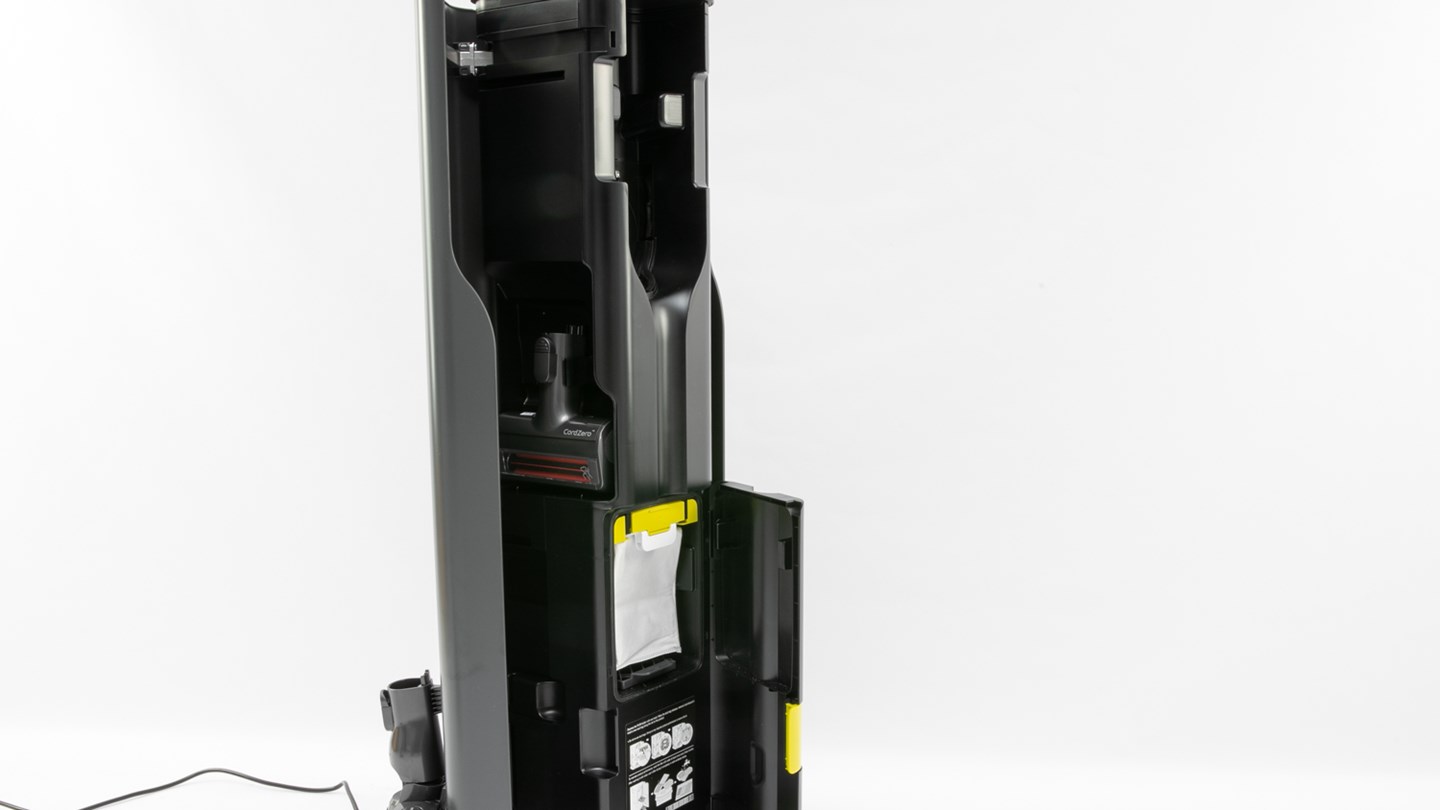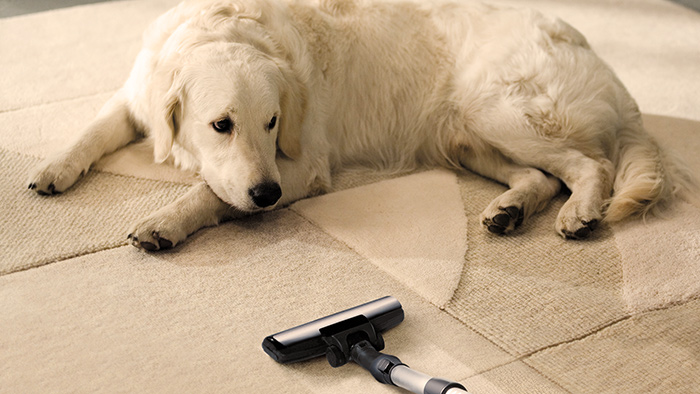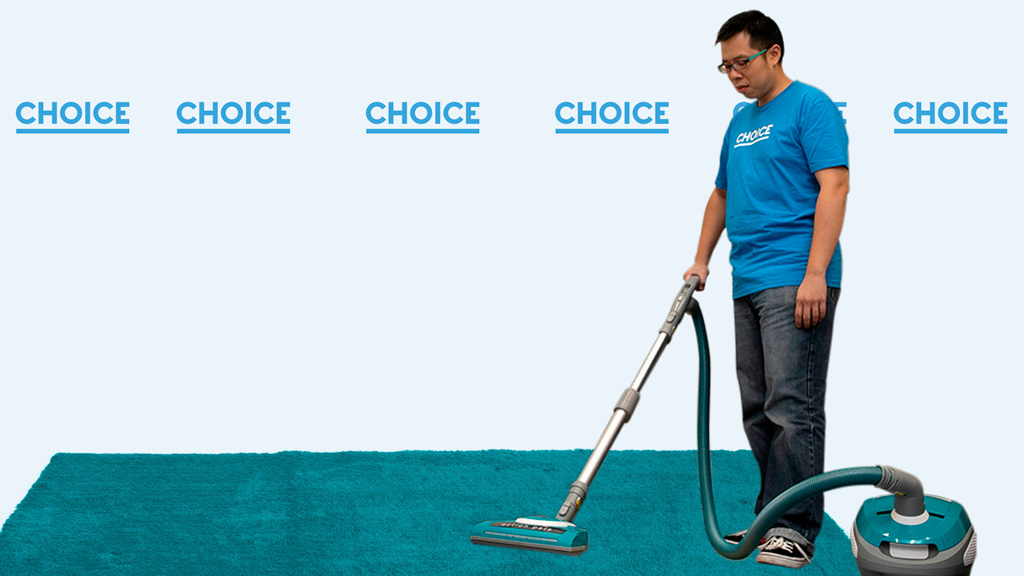Get our independent lab tests, expert reviews and honest advice.
Stick vs corded vacuums: Which type is better?

Cordless stick vacs have hit the mainstream and are one of our most popular CHOICE reviews.
On this page:
- Overall, corded barrel/upright vacuums are best on carpet
- Both vacuum types are good performers on hard floors
- Stick vacuums are easier to use
They arguably came into their own back in 2018 when Dyson announced it was no longer developing traditional corded vacuums because it saw the future as battery-driven.
Even Miele has jumped on the bandwagon with its own cordless vacuum range as well as tool brands such as Ryobi and Makita.
In our CHOICE lab tests, stick vac performance has improved significantly since we first began testing them in 2010, when even the best models performed poorly on carpet.
These days, many high-end models actually outperform their corded counterparts on carpet. But there is variability: some of the worst performers are certainly no substitute for a traditional vacuum.
The CHOICE verdict
We’ve crunched our test data, and if you’re willing to pay big bucks for a top-end stick vacuum (and aren’t bothered about emptying it more often), then a cordless vacuum could serve as a replacement for your corded barrel/upright model as they’re easier to use and can clean just as well.
But for big houses and big cleans, a decent traditional barrel or upright vacuum will do the trick for far less money upfront, and they could be better for people with allergies too.
Many people prefer to have the best of both worlds, bringing out the corded vac for a big clean, while keeping the stick vacuum for more frequent spills and minimising dust build-up.
Of course, every house is different, so check our comparisons across key areas below to see which one works best for you and your home.
Need more detailed advice? Our experts have put together a stick vac buying guide and barrel/upright vacuum buying guide to help you work out which vacuum is right for you.
Overall, corded barrel/upright vacuums are best on carpet
At first glance, there isn’t much difference between stick and corded vacuum performance when we look at our average test scores for vacuuming on carpet.
|
Vacuum type |
Thorough cleaning on carpet |
Quick cleaning on carpet |
|---|---|---|
|
Stick (cordless) |
70% |
63% |
|
Traditional (corded barrel/upright) |
73% |
66% |
But the average scores above are somewhat skewed by higher-end stick vacuums that cost upwards of $1000.
Very cheap stick vacuums can score poorly on carpet. Although some stick vacuums are definitely a substitute for a full vacuum – and the performance gap is closing – we can’t say that’s the case for most models out there.
When choosing an ultimate winner, we’re still going for the barrel/upright vac.
Both vacuum types are good performers on hard floors
CHOICE stopped testing traditional corded vacuums on hard floors many years ago, as they all performed well – carpet is where the real results vary.
Stick vacuums generally achieve good to very good performance scores on hard floors, where the average score is a healthy 76%. But our labs have seen some that score as low as 10%.
So, if your home mostly consists of hard floors, it’s worth checking out our individual product results in our stick vac reviews if you’ve been thinking about buying a stick vacuum.
Some stick vacs have special soft/fluffy head attachments for hard floors that are designed for better pick-up, which we use in our tests when applicable. They’re very convenient to bring out into the kitchen after a dry spill.


Barrel/upright vacuums are easier to clean
Stick vacuums have smaller dust bins (generally 0.2 litres to 0.7 litres) so they’ll need frequent emptying and should not be filled beyond the max line.
Emptying the bin after each use and cleaning the filters regularly (which can often be fiddly) will help maintain performance for most models.
Some stick vacuum designs try to make the hassle of emptying easier. Some of the larger Dysons have an extra large bin (measured at 1.6L), which means you’ll need to empty it less often.
LG, Samsung and Shark also make “automatic cleaning” models which empty the dust from the vacuum’s bin into a larger dust bag when placed on their charging docks.
Corded vacuums usually have a far greater dust capacity. The average measurement is about 1.9L and many dust bags from the Miele range, for example, have a huge 3L capacity.
Maintenance is about the same for both types of vacuum when it comes to cleaning or replacing the filters and getting tangled hair out of the brush heads, though.

Stick vacs and traditional vacs can be great at removing pet hair
Our lab tests show excellent results for pet hair removal from carpet in general, when the vacuums are at their strongest settings. Results have improved over time, suggesting that the suction and design of the power heads are getting better.
But cats and dogs shed a lot of hair, so although many of the stick vacuums we test these days do an excellent job, you might find yourself emptying the smaller receptacle more often.
This can be a pain and unhelpful if you suffer from allergies and long pet hair can also get caught in the brush heads.
Stick vacuums can conk out quite suddenly – on average, batteries take 4.5 hours to charge for just 13 minutes on full power
What’s more, the battery might not last long enough for you to pick up all the hair. Putting the vacuum on a lower setting can help it last longer, but it may not pick up as much hair as you’d like.
A traditional bagged vacuum will contain the pet hair when disposed, and both bagged and bagless vacs won’t need to be emptied as frequently.
For all types of vacuums, models may struggle if they don’t come with a turbo brush or motorised power head to really grab the hair that’s embedded in the carpet.
Stick vacuums are easier to use
Although traditional mains-powered vacuums are ahead in most areas, ease of use is a big factor to consider when buying a vacuum.
Stick vacuums we’ve tested have an average weight of just 2.8kg compared with 7kg for corded models, so for ease of moving around the house it’s clear why stick vacuums have become so popular.
Cleaning your car is also easy with a stick vacuum.
With most models the body detaches from the wand, and you can easily add a crevice or upholstery tool to suck up pesky pebbles and dirt. Some of the tools are flexible, so you can really get into tight spaces with ease.
The other bonus, of course, is you’re cord-free and ready to go. For quick cleans, there’s no contest.
While there are exceptions, regular vacuums have a limited reach of between 9 and 10 metres on average, so you’ll need to plug and unplug as you move around the house.
Swappable batteries are convenient, but a constant power source is best
Stick vacuums can conk out quite suddenly when you least expect it. On average, batteries take 4.5 hours to charge for just under 13 minutes of use on full power.
Thankfully, the situation is getting easier to manage with many models.

More than half of the current stick vacuum models we’ve tested have batteries you can easily swap out, so if you’ve got a spare one on hand you’re essentially doubling your runtime.
A few models (such as LG’s top-end A9 vacuums) have a dual power pack so you can charge one battery in the dock while the other’s in use, then swap over when needed. Ryobi and Makita have vacuums with batteries you can use in other power tools from the same family, too.
However, an extra battery doesn’t come cheap and a spare isn’t always supplied. For a Dyson, expect to pay $119–199 for an extra battery, depending on the model. (There’s a countdown timer to let you monitor power levels if you don’t want to invest in an additional battery.)
If you’re well-prepared, a stick vacuum can see you through a household clean, but it doesn’t compare with the constant power source of a corded vac.
Both types of vacuum are noisy
Vacuums may have a number of suction settings, so we test them at their loudest, strongest settings.
On that basis, we don’t actually see a discernible difference between corded and stick vacs, with both types measuring 73–74dB on average. Both types can make high-pitched, irritating sounds, too.
Traditional vacuums are better value
Our test results reveal that price isn’t necessarily an indicator of performance.
While some stick vacuums will set you back more than $1200, we’ve reviewed some at far lower price points that still do a very good job.
You do tend to get more value with a corded vacuum, though. Based on the models we’ve reviewed to date in recent years, the mid-price (median) of a stick vacuum is about $599, while the mid-price of a traditional corded vacuum is $374.






